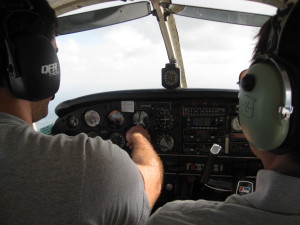The Future of Pilot Training
 Since the Wright brothers first took to the air, millions of men of woman have desired to likewise equip themselves with necessary training so that they too can enjoy the privilege of soaring above the clouds. Unfortunately the rising cost of jet fuel as well as increasing maintenance cost is resulting in a situation where not everyone can afford to enter a quality pilot training program. There are also those who hold the opinion that pilot training in itself has stagnated and are still focused on things which were deemed necessary five decades ago and very little has been done to incorporate modern pilot training methods. There are many that feel that a change in pilot training programs, which takes into account all of the recent discoveries in the aviation industry, could make piloting safer. In addition, pilot training cost could possibly be reduced if redundant training elements could be discarded without impacting on the quality of modern pilot training.
Since the Wright brothers first took to the air, millions of men of woman have desired to likewise equip themselves with necessary training so that they too can enjoy the privilege of soaring above the clouds. Unfortunately the rising cost of jet fuel as well as increasing maintenance cost is resulting in a situation where not everyone can afford to enter a quality pilot training program. There are also those who hold the opinion that pilot training in itself has stagnated and are still focused on things which were deemed necessary five decades ago and very little has been done to incorporate modern pilot training methods. There are many that feel that a change in pilot training programs, which takes into account all of the recent discoveries in the aviation industry, could make piloting safer. In addition, pilot training cost could possibly be reduced if redundant training elements could be discarded without impacting on the quality of modern pilot training.
Analyzing Modern Pilot Training Needs
Seasoned industry professionals to analyze the current pilot training curriculum with the objective of determining which parts of the training has become obsolete and what elements could be added in order to better prepare the modern pilot. There is no doubt that the quality of pilot training could be improved dramatically if redundant elements of pilot training are removed and if pilot training will incorporate some of the elements which has been observed over the last decade or two. Many experienced pilots are now saying that pilot training continues to focus on maneuvers and emergency situations, which are no longer the best training methods, in order to condition the modern pilot for situations of which they may be exposed. Some suggest that this kind of outdated pilot training is wasting a lot of time and fails to add any real value to the pilot training process.
Technology changes everything
Some of the elements that places pilot training beyond the reach of the man on the street is cost of jet fuel, maintenance cost, landing costs and exorbitant storage costs. In regards to the last two points, little could be done, but the first two may soon be addressed because of rapid technological advancements. It is not only the motor vehicle industry that is considering electric powered propulsion, but this technology is also researched in the aviation industry. The advantages probably won’t be as dramatic but will include more economic and less maintenance prone aircraft. Electric airplanes will drastically reduce the cost of operating an airplane, since according to well researched facts it will cost in excess of $70 to operate a Cessna 172 for an hour while it is expected that a similar electric airplane will fly at only $5 per hour. The addition of solar panels in the wings will mean that an airplane which has been parked in the sun will have its batteries fully recharged in a couple of days without the use of industrially generated power. There can be no doubt that this will be good news to all those men and women who are dreaming about a career in aviation and piloting.
Carter Industries is the exclusive supplier of Nomex flight suits to the U.S. Defense force. For more information or to view our inventory, click HERE.



